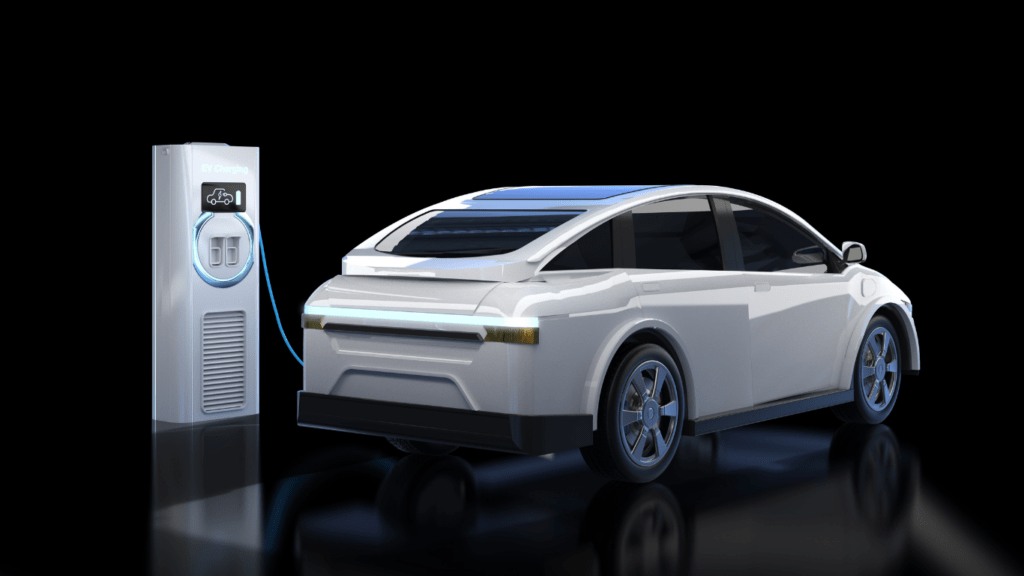Current State of the Automotive Industry
Automakers have ramped up efforts to incorporate sustainability in every aspect of their operations. Electric vehicles (EVs) now make up about 14% of global car sales as of 2023, reflecting growing consumer interest in reducing carbon emissions. With governments around the world committing to going net-zero by 2050, companies are investing significantly in EV infrastructure, including charging stations and battery technology.
In addition to EVs, manufacturers are also focusing on hybrid models. Major companies like Toyota and Ford have released multiple hybrid versions of their popular models. These hybrids serve as a transitional solution, blending traditional engines with electric power to offer a more eco-friendly driving experience.
Using recycled materials has gained momentum. BMW and Mercedes-Benz are leading the way by incorporating recycled plastics, metals, and other materials into their vehicle production processes. These efforts are reducing the environmental impact of car manufacturing and promoting a circular economy.
Energy-efficient manufacturing processes are another crucial focus. Factories are being equipped with advanced technology to minimize energy consumption and waste. For instance, Tesla’s Gigafactories are designed to operate on renewable energy sources like solar and wind power, showcasing how large-scale production can be aligned with sustainability goals.
Autonomous driving technology also plays a role in this shift. While still in development, self-driving cars promise to optimize fuel efficiency and reduce traffic congestion. Companies like Waymo and Tesla are at the forefront of this innovation, conducting extensive testing to bring these solutions to the market.
The current state of the automotive industry shows a clear commitment to sustainability. Through electric and hybrid vehicles, recycled materials, energy-efficient manufacturing, and autonomous driving technologies, automakers are paving the way for a greener future.
Key Drivers of Sustainability
Sustainability in the automotive industry is heavily influenced by several key drivers. These elements shape the direction and pace of sustainable practices within the sector.
Environmental Regulations
Governments implement stringent environmental regulations to curb emissions and promote cleaner technologies. These regulations require automakers to reduce CO2 emissions and increase fuel efficiency, compelling them to innovate in greener technologies. The European Union’s CO2 emissions standards mandate a reduction to 95 g/km for passenger cars. Similarly, in the US, the Corporate Average Fuel Economy (CAFE) standards push for an increased average fuel economy of 54.5 mpg by 2025.
Consumer Demand for Green Vehicles
Consumer awareness of environmental issues drives demand for greener vehicle options. Shifts in consumer preferences necessitate automakers provide eco-friendly products. According to the International Energy Agency, global electric vehicle (EV) sales surpassed 6.6 million units in 2021, a significant increase from previous years, reflecting a growing preference. High fuel prices and urban air quality concerns also make hybrid and EV models more attractive to consumers.
Technological Innovations
Technological advancements play a critical role in enhancing sustainability in the automotive sector. Innovations in battery technology, like solid-state batteries, improve EV range and reduce charging times. Companies invest in alternative materials and renewable energy sources to lower the environmental impact. For example, Toyota’s focus on hydrogen fuel cell technology presents a zero-emission solution for the future. Autonomous driving technology optimizes traffic flow and enhances fuel efficiency, further contributing to sustainability goals.
Sustainable Manufacturing Practices

Automakers are implementing sustainable manufacturing practices to reduce environmental impact and promote eco-friendly production processes.
Use of Recycled Materials
- Car manufacturers are increasingly using recycled materials in production.
- BMW, for instance, incorporates recycled plastics and metals, reducing reliance on virgin materials.
- Mercedes-Benz is another example, integrating recycled components into its vehicles.
- Using recycled materials not only lowers raw material consumption but also minimizes waste and environmental degradation.
- By adopting these practices, automakers contribute significantly to a circular economy, emphasizing recycling and reusability.
Energy-efficient Production Processes
Energy-efficient production processes are crucial for sustainable manufacturing. Tesla’s Gigafactories are prime examples, running on renewable energy sources such as solar power. BMW’s iFactory project aims to reduce energy consumption by up to 50% through advanced manufacturing techniques. These factories utilize energy management systems to optimize usage and incorporate green technologies. By focusing on energy efficiency, automakers can lower operational costs and carbon emissions, leading to a more sustainable production environment.
Advances in Electric and Hybrid Vehicles
Advances in Electric and Hybrid Vehicles
Electric and hybrid vehicles are pivotal in the automotive industry’s shift toward sustainability. These technologies offer viable solutions for reducing carbon emissions and reliance on fossil fuels.
Growth of Electric Vehicle Market
The electric vehicle (EV) market has experienced significant expansion in recent years. In 2023, EVs comprised approximately 14% of global car sales, up from 10% in 2022. Major automakers, including Tesla, Nissan, and Chevrolet, have invested heavily in EV production and infrastructure. Battery technology advancements have led to longer driving ranges and shorter charging times, addressing two primary consumer concerns. Charging stations have increased by 20% globally, enhancing EV convenience and accessibility.
Government incentives and regulations drive the growth of the EV market. Incentives like tax credits and rebates make EVs financially attractive, while stringent emissions regulations compel automakers to innovate. For example, the European Union’s CO2 emissions standards push automakers toward developing more EV models to meet regulatory requirements.
Hybrid Technologies
Hybrid vehicles bridge the gap between conventional engines and fully electric powertrains. These models combine the benefits of internal combustion engines (ICE) with electric motors, offering improved fuel efficiency and reduced emissions. Popular hybrids include:
- Toyota Prius
- Honda Insight
- Ford Fusion Hybrid
which have consistently demonstrated reliable performance and efficiency.
Plug-in hybrid electric vehicles (PHEVs) represent a significant advancement in hybrid technology. PHEVs can operate on electric power for short distances, switching to ICE for longer trips. This flexibility appeals to consumers not ready to transition to fully electric vehicles. Advances in PHEV technology have increased electric-only ranges and reduced battery charging times, further enhancing their practicality.
Hybrid technologies also extend to commercial vehicles. Companies like Volvo and Daimler are developing hybrid trucks and buses, which contribute to lowering emissions and operational costs in the logistics and public transportation sectors. The integration of hybrid systems in these vehicles demonstrates the broader applicability and benefits of hybrid technology beyond passenger cars.
Automakers are also exploring new hybrid configurations, such as mild hybrids, which use a smaller electric motor to assist the ICE, providing better fuel economy without the need for a full hybrid system. These innovations showcase the automotive industry’s commitment to finding diverse solutions for sustainability.
Role of Renewable Energy in Automotive Industry
Automakers are increasingly tapping into renewable energy to achieve environmental goals. Renewable sources not only power facilities but also drive technological advancements.
Solar and Wind Power
Solar power is becoming mainstream in automotive manufacturing. Automakers like Tesla and Toyota are installing solar panels on factory roofs to harness clean energy. For instance, Tesla’s Gigafactory in Nevada produces 70 MW of solar energy annually, reducing its reliance on fossil fuels. Toyota’s Tsutsumi Plant in Japan utilizes solar power to lower CO2 emissions by 3,000 tons each year.
Wind power complements solar energy by providing renewable electricity for factory operations. BMW’s Leipzig plant features four wind turbines, generating 26 GWh annually. This setup supports sustainable production processes and lowers carbon footprints. Volkswagen’s Chattanooga plant also uses wind energy, producing 12.5% of its electricity needs, underscoring the industry’s commitment to greener energy solutions.
Battery Storage Solutions
Energy storage is crucial for sustainable manufacturing. Integrating battery systems helps manage energy supply and demand efficiently. Tesla’s Powerpack system at its Gigafactory stores excess solar energy, providing a backup during low-production periods. This enhances energy resilience and reduces operational disruptions.
Automakers are also developing grid-scale battery storage. Nissan’s xStorage project in the UK exemplifies this trend, repurposing used EV batteries to store renewable energy for residential and industrial uses. Such initiatives extend the lifespan of batteries and promote circular economy principles within the automotive sector.
Challenges and Barriers
The automotive industry’s shift towards sustainability faces numerous obstacles. Key challenges include infrastructure limitations and economic constraints.
Infrastructure and Charging Networks
Developing a widespread and reliable charging network is critical for the success of electric vehicles (EVs). Yet, the current infrastructure lags behind the rapid adoption of EVs. According to the International Energy Agency (IEA), there are approximately 1.8 million public charging points globally in 2023. While this represents a 20% increase from 2022, it’s still insufficient to meet the growing demand.
Geographic disparities also pose a problem. Urban areas tend to have more charging stations, while rural regions face shortages. This imbalance limits the convenience of EVs for all users, leading to range anxiety. Automakers and governments must collaborate to expand the charging network uniformly to ensure accessibility and convenience.
Economic Constraints
Transitioning to sustainable practices involves significant financial investment. Developing new technologies, building charging infrastructure, and retrofitting manufacturing plants require substantial capital. Small and medium-sized automotive companies particularly struggle with these economic burdens.
Government incentives, like tax credits and grants, help mitigate some costs, but they aren’t always enough. Additionally, fluctuations in raw material prices, such as lithium for batteries, can impose further economic stress. Automakers need to balance the high upfront costs with long-term benefits to ensure the financial viability of sustainable practices.
Future Trends in Automotive Sustainability
Future trends in automotive sustainability focus on advanced technologies and innovative models. These trends aim to further reduce carbon emissions and enhance efficiency, contributing to a more sustainable future.
Autonomous and Connected Vehicles
Autonomous and connected vehicles represent a significant leap in automotive sustainability. These vehicles optimize fuel efficiency by utilizing advanced algorithms to manage traffic flow and reduce idle times. For example, autonomous taxis operating in urban environments can cut down on emissions by reducing unnecessary braking and acceleration. Companies like Waymo and Uber are at the forefront of developing these technologies. Moreover, connected vehicles communicate with each other and traffic infrastructure to create more efficient travel routes, decreasing congestion and fuel consumption. This technology also enables proactive maintenance, reducing waste by ensuring parts are used efficiently and replaced only when necessary.
Circular Economy Models
Circular economy models emphasize resource efficiency and waste reduction by reusing materials. In the automotive industry, this model extends the life cycle of vehicles and components. BMW and Nissan utilize recycled plastics, metals, and other materials in their manufacturing processes, promoting a more sustainable production cycle. Another aspect of the circular economy is the refurbishment and recycling of batteries. Companies like Tesla and Redwood Materials recycle lithium-ion batteries, extracting valuable metals for new battery production. This approach not only lowers costs but also reduces reliance on raw material extraction, minimizing environmental impact. Additionally, automakers are developing strategies to recycle end-of-life vehicles, ensuring that parts and materials are repurposed or recycled rather than discarded.
Implementing these trends helps the automotive industry move towards greater sustainability, aligning with global environmental goals.




